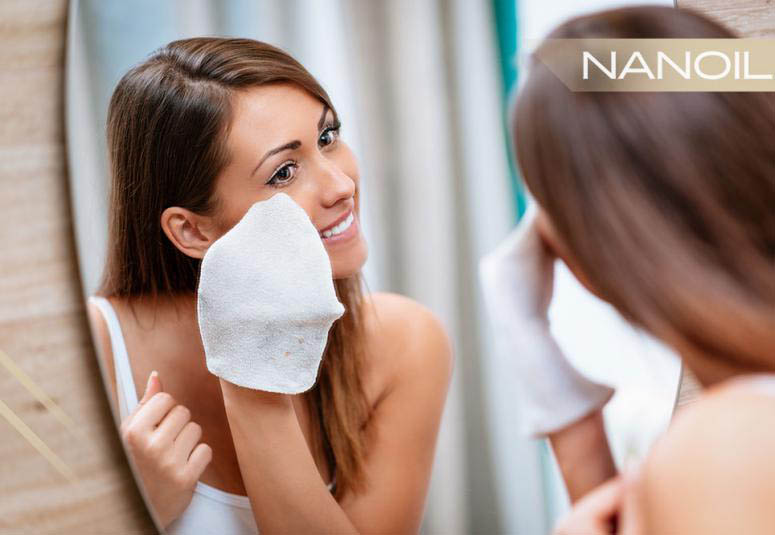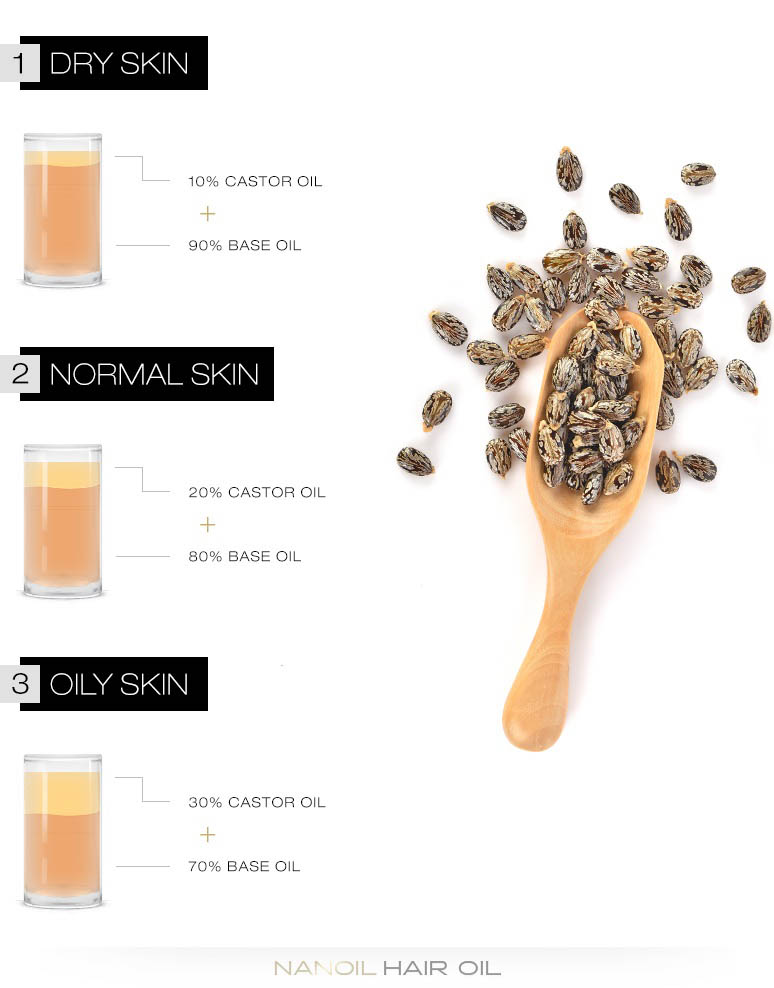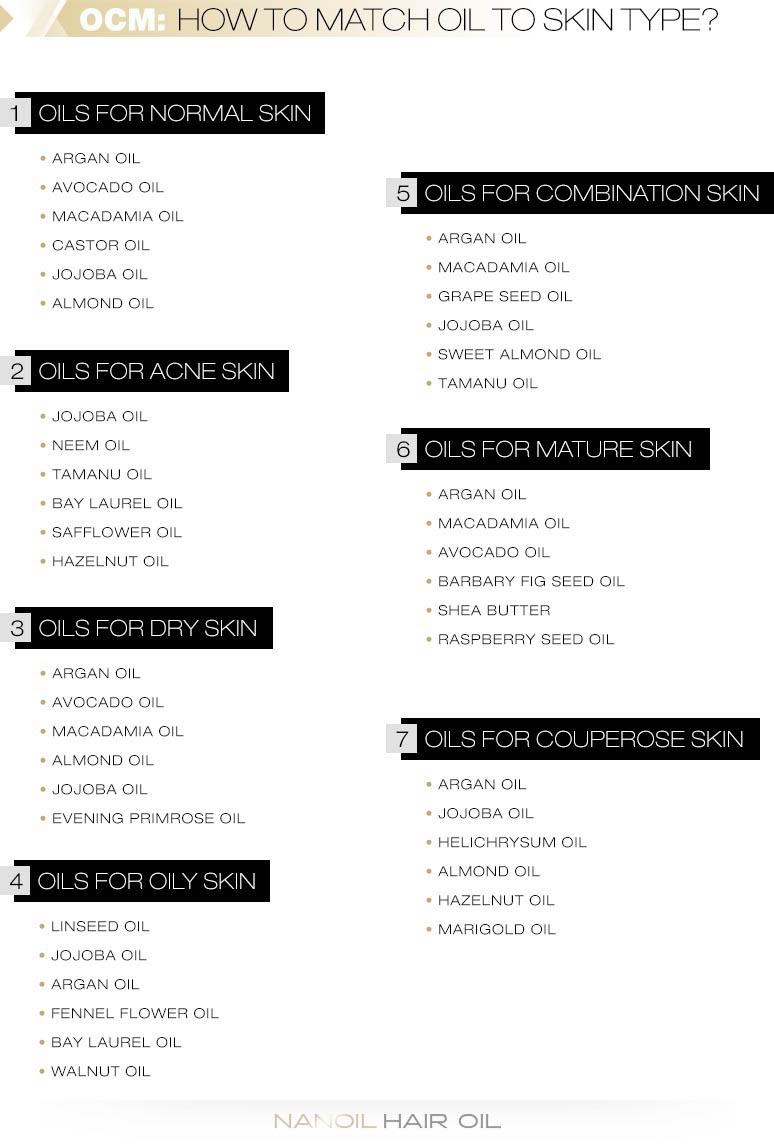- NANOIL Products
- Oils
- Face serums
- Hair masks
- Shampoos
- Hair conditioners
- Hair styling
- Hair Porosity Test
- Blog
- Contact

OCM, which is the abbreviation of Oil Cleansing Method, is one of the finest skin care treatments of our times. And the best thing about it is that it's perfectly suitable not only for dry skin but also mature, acne and couperose. The secret of this method lies in well-matching oils and their blends. Find out why cleansing face with oils is found beneficial, how to carry out this procedure step by step and what ratio of oils should be used to deliver the most of OCM to face skin.
As mentioned above, OCM (Oil Cleansing Method) is a way of freeing face from makeup and other impurities, which accumulate throughout a day, with the use of specially prepared mixture of natural oils which the percentage contribution in a particular blend isn't accidental.
This method is mainly popularized in Asia. Its effectiveness is based on a really simple assumption that says: "oil removes oil." This method is also applied by cosmetic manufacturers who launch, among others, bi-phase make-up removers, where one phase is an oil phase, obviously.
However, this is where the similarity between bi-phase products and natural oils ends. After all, oils are entirely natural and stand in opposition to drugstore makeup removers which by most contain harsh detergents. Once again, OCM is connected with using a fully natural, safe blend that is made up of castor oil and base oil, or a few additional natural beauty oils.
Washing face with oils is found perfect for cleansing all skin types, including oily, acne and couperose.
What's important though, oil used for the procedure must match the skin type so it’s able to play in tune with the face skin needs, cleanse it, cure dermatological ailments, replenish with water and improve the general condition of the complexion.
Basically, cleansing face due to oils is mostly a good practice to be introduced in daily care of dry, extremely dry, dehydrated and sensitive skin types. Regular cosmetics designed to cleanse face and take makeup off contain many controversial substances that work aggressively, which translates into producing adverse effects in such skin types. In short, they strip the sebum layer from skin, which in fact is found essential for hydro-lipid barrier to remain strong. As a consequence, skin treated with regular cleansing products becomes irritated, dehydrated and frequently considerably deprived of water.
The universality of OCM depends on the fact that it can be applied to cleanse and take care of oily skin too. Owing to the adequate oils, OCM will significantly improve the appearance of oily complexion. This improvement takes the form of, among others, normalizing the work of sebaceous glands, shrinking and reducing the visibility of skin pores, and disappearance of acne.
It's worth realizing that detergents disturb the hydro-lipid barrier of skin which is why the skin might become irritated, reddened and put out of order. Due to gradual reduction of harsh detergents and replacing them with natural oils, OCM is recognized as safe, non-invasive and beneficial skin care ritual suitable for all skin types.
Furthermore, OCM is a good method to be introduced in daily skin care also because it allows to remove makeup and provides deep skin cleansing without using any micellar lotion, foam or other face cleansing gel prior to the procedure. This might seem incredible for some people but oils are the best of all the products currently available at making face skin clean.
Alike any other cosmetic, also oils need some time to bring about the looked-for effects. The feeling of clean and nice to the touch face will be sensed immediately. Regeneration, evening out of skin tone and wrinkle reduction can take a little bit more, even up to a few weeks. It may also happen that your oil blend requires introducing slight modifications, which is caused by individual skin needs. Many women report observing positive changes in skin appearance after just a week, whereas the others must wait longer to let the skin purify itself to proceed with boosted self-regenerating processes.
In the most basic version, each oil blend used to cleanse face is made up of castor oil and a correctly chosen carrier oil (displaying cleansing and conditioning properties). Bear in mind to choose only [unrefined and cold-pressed oils] to carry out OCM because this type of oils is classified as the ones having the highest quality. Also, such oils don't lose their precious nourishing substances. What should be realized, the ratio of oils prepared for OCM differs due to skin type that they are expected to cleanse. The general division is as following:
Castor oil is similar in composition to human sebum and is perfectly suitable for cleansing face. On the flip side, this oil displays dehydrating properties, therefore its ratio is different for various skin types. It should be realized that castor oil can be replaced with jojoba oil.

The most frequently, base oil used for OCM is the one that plays in tune with your skin type. After all, its task isn't only to make skin clean and regenerate it but also to help it function properly. Many oils work for more than just one skin type. If you know your skin type, you can make use of the following guide:

Leave your email address and we ll notify you when the product is back in stock.
Comments: #0